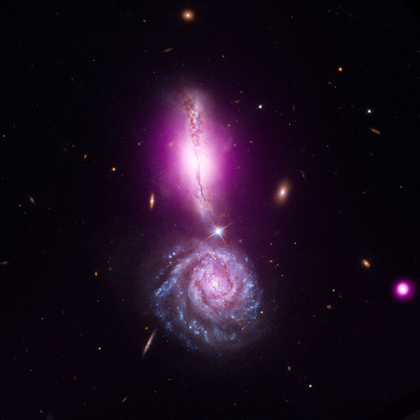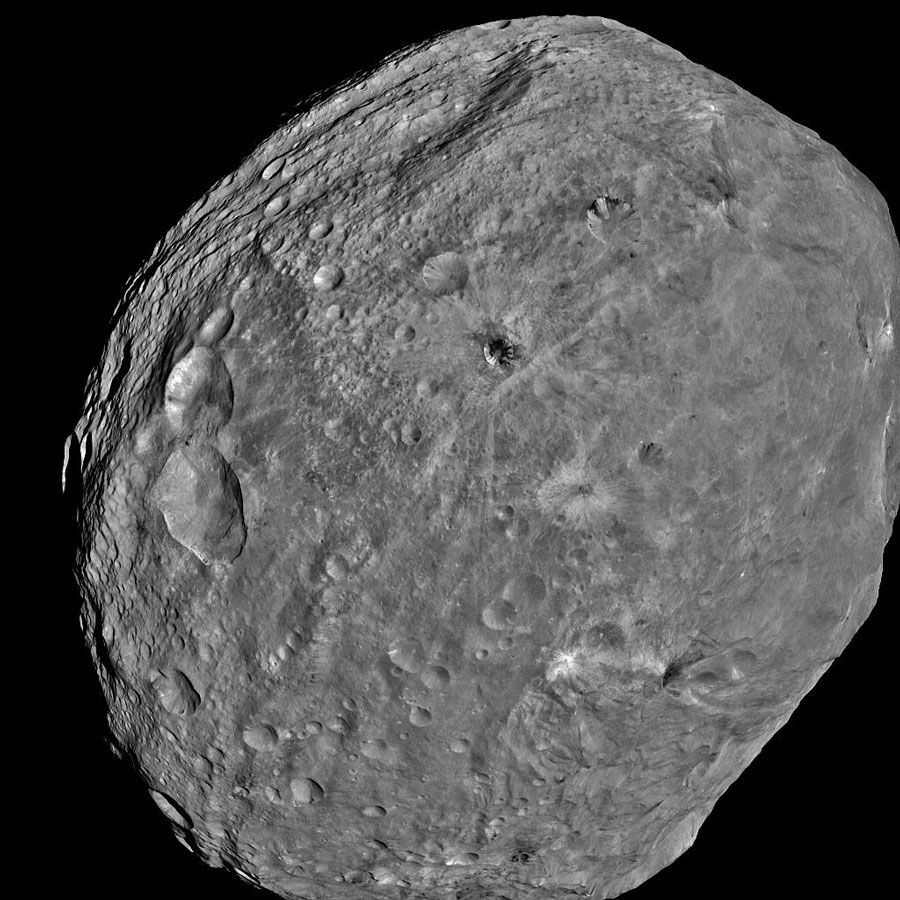 Image Credit: X-ray NASA/CXC/IfA/D.Sanders et al; Optical NASA/STScI/NRAO/A.Evans et al
Image Credit: X-ray NASA/CXC/IfA/D.Sanders et al; Optical NASA/STScI/NRAO/A.Evans et al
Sort of looks like an exclamation point, right?
These two galaxies are known as VV 340 (or Arp 302), and are about 450 million lightyears from Earth, a light year being about 6 trillion miles. VV 340 spans about 285,000 light years. The top galaxy is edge-on (VV 340 North) while the bottom one (VV 340 South) is pretty much face-on, a wonderful set of views.
And now, check out this narrated animation:
For more information and/or to see/download a higher res video and a variety of still-image sizes , just click the link below.
Happy galaxy gazing!







